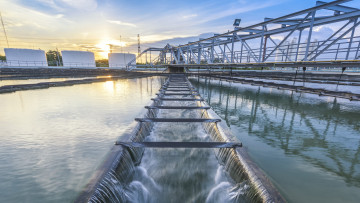Water is an essential resource we cannot do without and is central to our daily lives, ecosystems and economies. In a world where water is becoming increasingly scarce, managing and using it becomes paramount. How can Water Stewardship help us with this? And how can you apply it within your organisation?
Water stewardship: the basics
Water stewardship refers to the responsible management of water resources to ensure the sustainability of this valuable resource. This involves taking measures to maintain and improve the availability and quality of water for human use and ecosystems.
It is not just about reducing water use, but also about understanding the wider context of water stewardship, such as the impact on local communities, biodiversity and climate change.
What is the importance of water stewardship?
Water plays a crucial role in agriculture, energy production, industry and drinking water supply. Unfortunately, high-quality water is becoming increasingly scarce worldwide due to climate change, population growth and pollution. Water stewardship helps companies and organisations take responsibility for their water use, helping to conserve this valuable resource.
As a result, companies can not only save costs through more efficient use of water, but also have a positive environmental impact and social commitment. Moreover, by using water sustainably and diversifying sources, costs (due to production reductions caused by water shortages) can be avoided during droughts.
Antea Group is SDG Champion
Thanks to our continued commitment to Water Stewardship, we were honoured to receive the SDG Champion certificate from Voka Chamber of Commerce. This certificate recognises our commitment to sustainable water use and promoting the Sustainable Development Goals (SDGs). We remain committed to the conservation and responsible use of water resources to create a positive impact on society and the environment.
Read more
Concrete applications of Water Stewardship
As a member of the Alliance for Water Stewardship (AWS), we are committed to responsible water stewardship within both our organisation and those of our clients. In doing so, we see that Water stewardship can be applied at different levels, including:
- Within companies: Companies can implement water stewardship by using efficient water technologies, treating and reusing wastewater, and reducing their water footprint through awareness campaigns and behavioural change within the organisation.
- In collaboration with other parties: Collaboration between businesses, communities and governments can lead to collective action to protect water systems. You can do this by setting up local water management plans, creating protected areas around water sources and promoting sustainable water use throughout the value chain.
- In engagement with local communities: Water stewardship also includes involving local communities in decision-making processes related to water management. By working with stakeholders, companies can ensure that their activities do not negatively impact local water resources and provide positive social and economic benefits to the community.

Want to know more about water stewardship?
I am happy to help!






